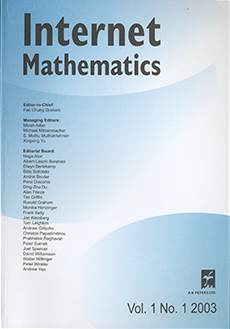Abstract
We propose and analyze a class of evolving network models suitable for describing a dynamic topological structure. Applications include telecommunication, online social behavior, and information processing in neuroscience. We model the evolving network as a discrete-time Markov chain and study a very general framework in which edges conditioned on the current state appear or disappear independently at the next time step. We show how to exploit symmetries in the microscopic, localized rules in order to obtain conjugate classes of random graphs that simplify analysis and calibration of a model. Further, we develop a mean field theory for describing network evolution. For a simple but realistic scenario incorporating the triadic closure effect that has been empirically observed by social scientists (friends of friends tend to become friends), the mean field theory predicts bistable dynamics, and computational results confirm this prediction. We also discuss the calibration issue for a set of real cellphone data, and find support for a block model in which individuals are assigned to one of two distinct groups having different within-group and across-group dynamics.
Citation
Peter Grindrod. Desmond J. Higham. Mark C. Parsons. "Bistability through Triadic Closure." Internet Math. 8 (4) 402 - 423, 2012.
Information




